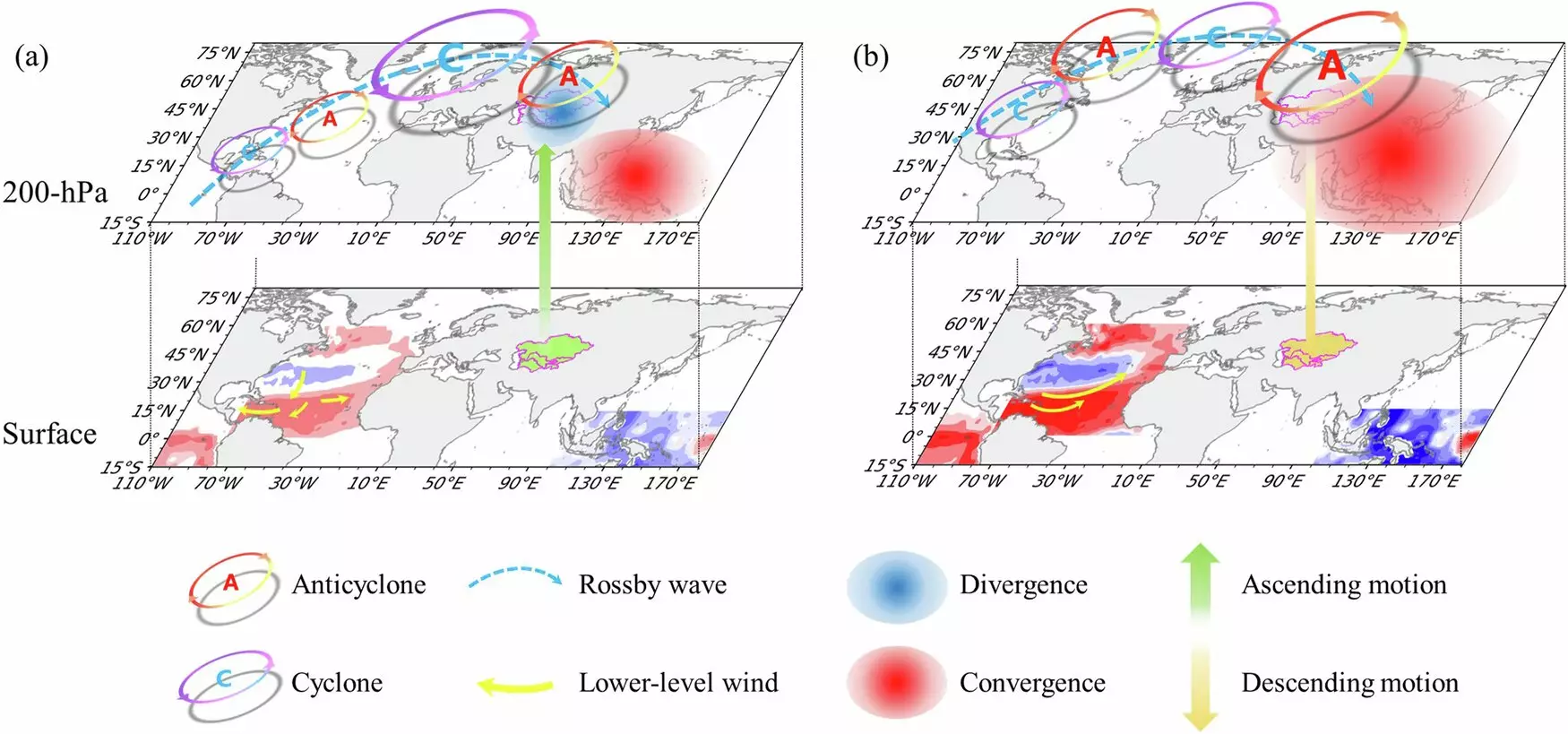Central Asia, a vast region that includes Kazakhstan, Uzbekistan, Turkmenistan, Kyrgyzstan, and Tajikistan, presents a unique landscape characterized by semi-arid to arid climates. This geography brings forth several environmental challenges, predominantly shaped by its continental climate. The region’s delicate ecosystem is acutely responsive to shifts in rainfall patterns, with the essential growing season typically aligning with the primary rainy period in spring. Accurate understanding of precipitation variability becomes crucial, as it significantly impacts the water resources, livelihoods, and economic viability in these countries.
The Role of Spring Precipitation in Central Asia
Spring precipitation is not just important for agriculture; it acts as a bellwether for the broader ecological health of Central Asia. The region’s largely agricultural economy relies heavily on specific rainfall patterns that can fluctuate year-to-year, with every drop of rain counting towards the sustainability of crops and livestock. Given that Central Asia is one of the largest regions impacted by drought, monitoring shifts in precipitation becomes vital for local farmers and policymakers alike.
Research over the years has highlighted the connection between global weather phenomena and localized climate effects in Central Asia, with one of the most crucial links being the El Niño-Southern Oscillation (ENSO) phenomenon. El Niño events traditionally influence global weather patterns, and their far-reaching effects extend even to the central and eastern parts of this diverse region. However, analyses reveal that the relationship between ENSO and spring precipitation in Central Asia is not straightforward and has undergone fluctuations over time.
A revealing study published in *npj Climate and Atmospheric Science* has illuminated changing interactions between ENSO and Central Asia’s spring rainfall. Researchers from the Institute of Atmospheric Physics of the Chinese Academy of Sciences conducted a meticulous evaluation, demonstrating that the strength of this relationship has not remained static. What is particularly noteworthy is the gradual transformation observed since the 1930s, with periods of both weakening and strengthening correlations until a noticeable trend began to emerge around the 2000s.
The researchers pinpoint two major factors influencing these interdecadal shifts. First, alterations in the meridional pathway—essentially how Pacific sea surface temperature anomalies affect moisture and atmospheric dynamics—have catalyzed variations in pre-monsoon rainfall. A stronger upper-level divergence over Central Asia during robust El Niño phases fosters vertical motion and, by extension, increased rainfall. Conversely, during epochs of weaker correlation, these impacts diminish, leading to more inconsistent precipitation patterns.
The second factor that emerges from the study is the noteworthy influence of distinct sea surface temperature anomalies in the North Atlantic region. These anomalies play a crucial role, particularly after El Niño years, introducing patterns that can disrupt the otherwise beneficial wetting influence expected from an El Niño event. When combined with specific temperature conditions in the North Atlantic—namely cold anomalies in the middle and warm anomalies both at the subpolar and tropical regions—the resultant disruption becomes more pronounced.
Interestingly, these disruptions are markedly more impactful during weak correlation periods between ENSO and Central Asia’s spring rainfall, further complicating predictions for the region. This invites a deeper inquiry into the underlying mechanisms that dictate sea surface temperature variations, particularly the critical role of wind patterns and the state of the Pacific Decadal Oscillation (PDO). In positive PDO phases, slower-decaying ENSO events correlate with pronounced temperature patterns that may counteract potential rainfall increases in the region.
The findings from this recent research illuminate the complex interplay between global climatic events like ENSO and local precipitation patterns in Central Asia. Importantly, the strengthening trend in the relationship between ENSO and spring precipitation since the 2000s provides valuable information that could enhance future climate forecasts, particularly for the region’s agricultural stakeholders. As climate predictions become increasingly sophisticated, understanding these dynamics can empower communities and governments to better prepare for the uncertainties of climate change, ensuring the resilient management of one of the world’s most fragile ecosystems.


Leave a Reply